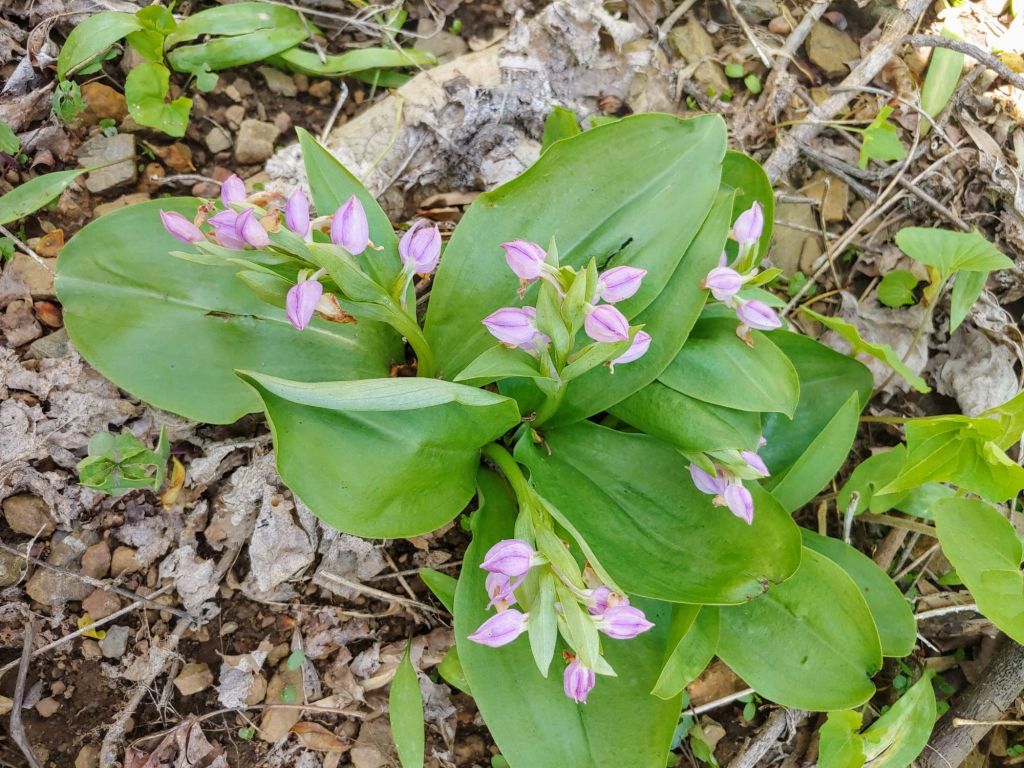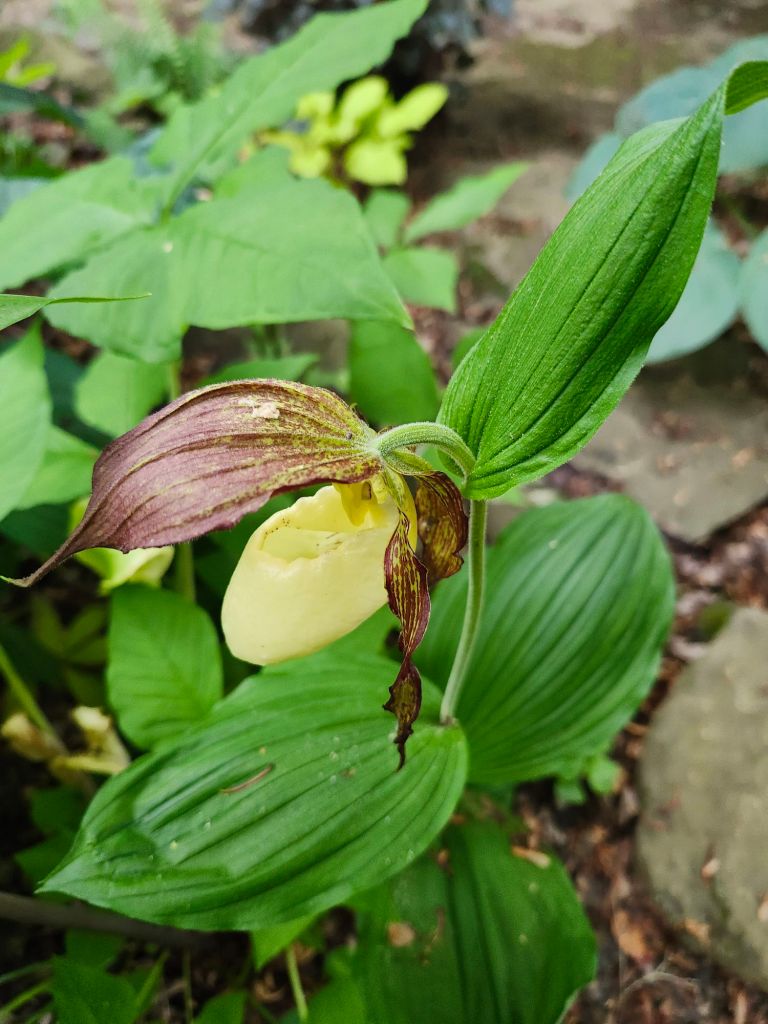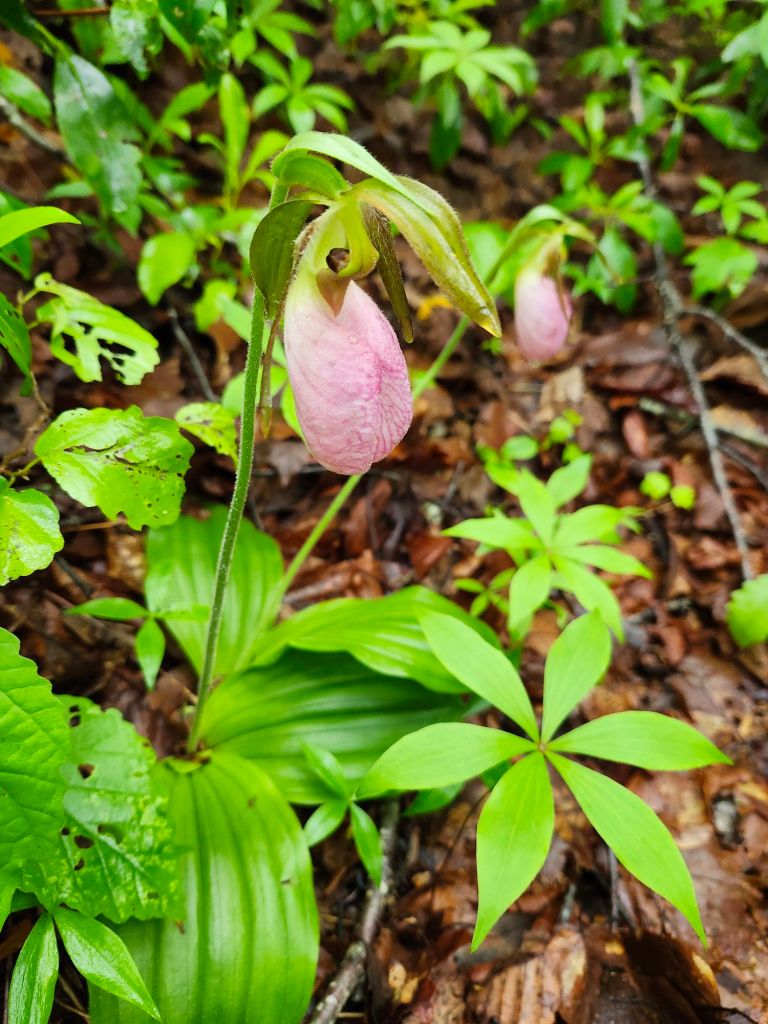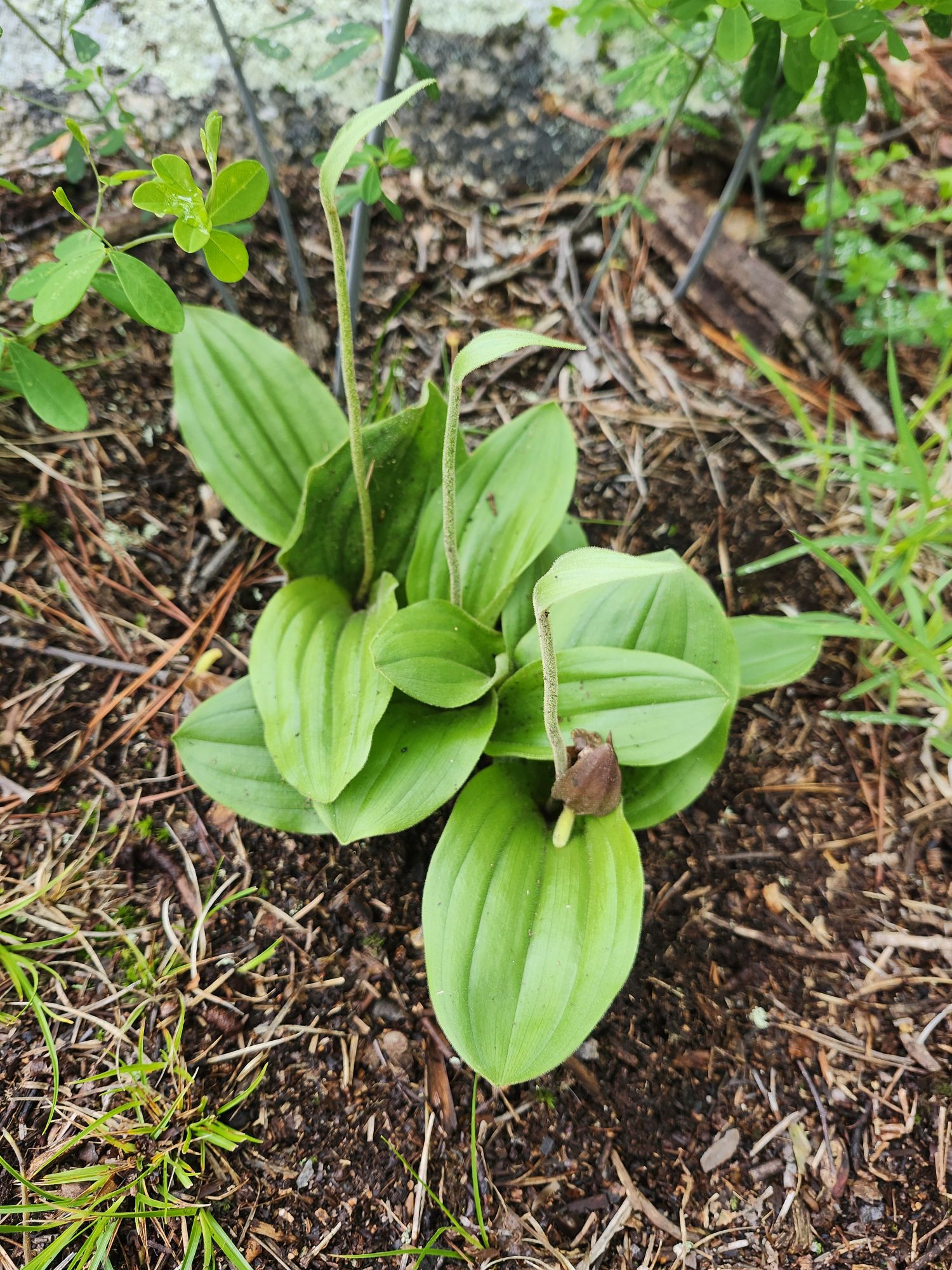The native Showy orchids (Galearis spectabilis, below), apparently in a less than ideal location, have failed to appear this spring. The cover of fallen leaves is deep in this area, so I suspected their appearance was delayed, but it appears they’re gone.

As a whole, native orchids are somewhat difficult to establish in the long term, and given their subtle floral attraction, the gardener must wonder if all are worthy of the effort.

I exclude lady’s slippers (Cypripedium) from remarks regarding less remarkable blooms, but both pink and yellow are quite picky about their growing conditions. In any case, I will continue efforts to increase the native orchid population in the garden while continuing to enjoy Calanthe and Bletilla (below) varieties that are considerably simpler to grow. Clumps of these non-natives increase rapidly enough that I am able to dig and share regularly.


Thankfully, the garden’s single yellow lady’s slipper (Cypripedium parviflorum, below) has become three, though all are close beside a path and constantly in peril of being crushed by an inattentive visitor. Still, I dare not move any of the three that are mashed together with a slowly increasing clump of Paris podophylla and rapidly increasing (by seed) jack-in-the-pulpits (Arisaema triphyllum).

While lady’s slippers are the star of any hardy orchid display, I also treasure the smaller, less grand flowers of other native orchids. While my colorblindness makes identification difficult in the wild, my wife has become a keen spotter of all and an able identifier as we hike local woodlands. Many days on our hiking schedule are committed to trails where pockets of natives have been identified. Of course, viewing the orchids in their habitat somewhat eases the disappointment of my difficulties in growing them.


have you tried growing goodyera pubescens?
Yes. They don’t flower until late July, so there’s not much to see. They survive and flower, but I haven’t figured out how to encourage them to spread.